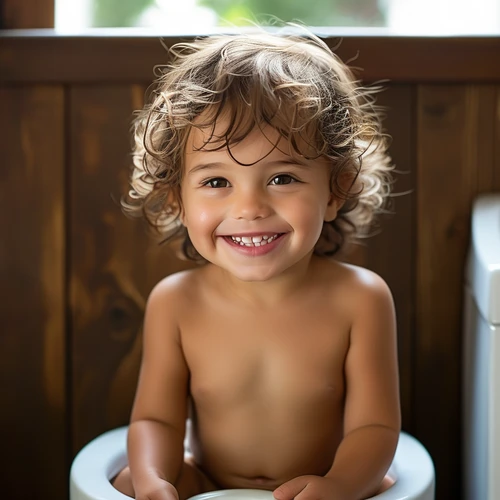Introduction
Potty training is among the most significant childhood milestones, marking a transition from dependence on caregivers to greater self-reliance. While it can sometimes be challenging, understanding basic principles and employing practical techniques will make this process smoother for both you and your child.
The Right Age
There is no one-size-fits-all age for potty training. Children usually show signs of readiness between 18 to 24 months, though some may not be ready until they are three years old. Watch for signals such as staying dry for longer periods, expressing discomfort when wet or dirty, telling you before or after having a bowel movement, or showing curiosity about the toilet.
Building Foundations
Preparation: Purchase a child-sized potty and place it in a visible location. Read books or watch videos that illustrate potty use to normalize the concept for your toddler.
Routine: Establish a regular bathroom routine, encouraging your child to sit on the potty at the same times each day (typically after meals).
Clothing: Dress your youngster in easy-to-remove garments to facilitate quick access to the toilet.
Positive Reinforcement
Reinforce positive behavior with praise or rewards. Simple stickers for successful attempts can be highly motivating. Keep the atmosphere light and fun to avoid pressure, which can lead to stress and resistance.
Dealing With Setbacks
Accidents will happen during potty training. When they do, stay calm and clean up without making a big fuss. Remind your child of proper techniques and reassure them that learning takes time.
When to Seek Professional Help
While potty resistance or difficulty is normal for some children, persistent issues lasting more than three months past the age when peers have mastered this skill may warrant a visit to your pediatrician. Sometimes underlying problems like constipation or bladder dysfunction can impact the process.
Conclusion
Potty training requires patience and consistency but also allows parents to celebrate significant developmental milestones with their children. By observing readiness cues, implementing constructive methods, and offering positive reinforcement, both guardians and youngsters will traverse this stage smoothly.


